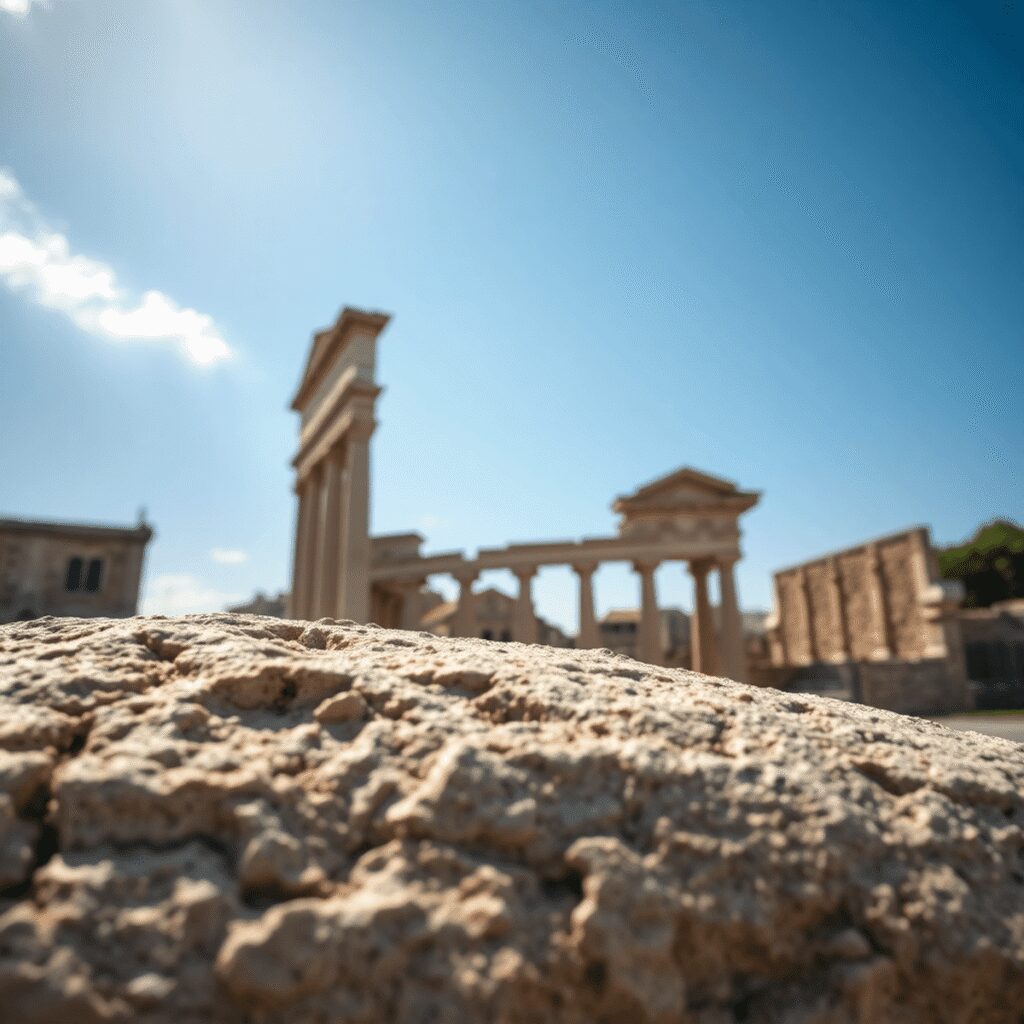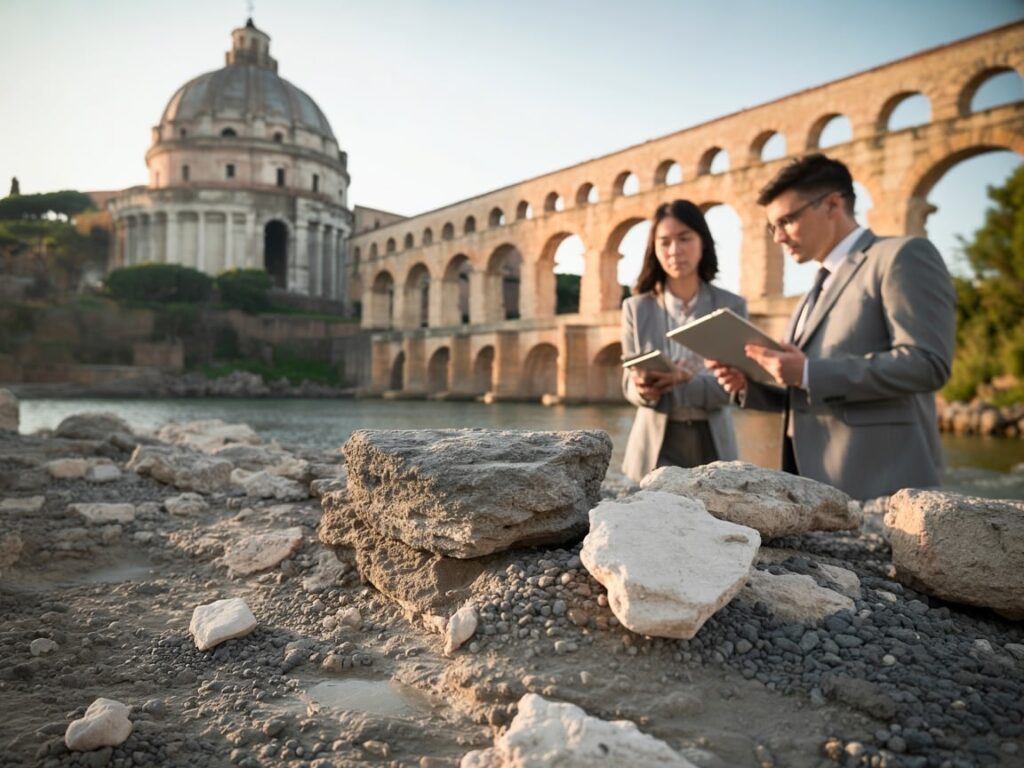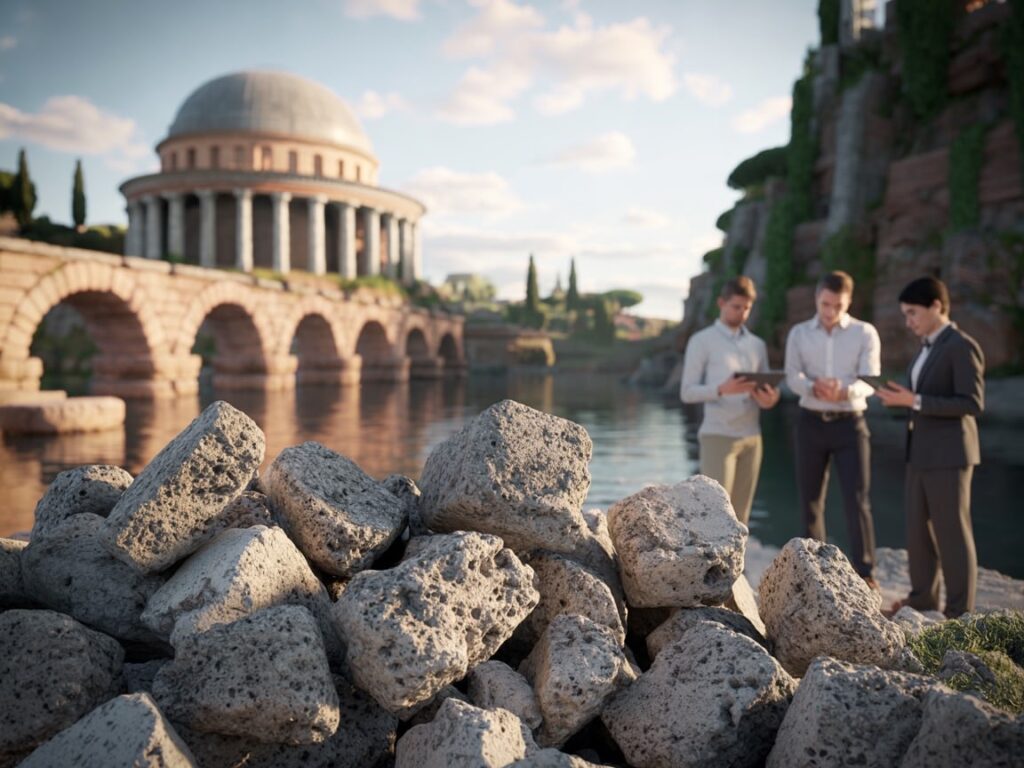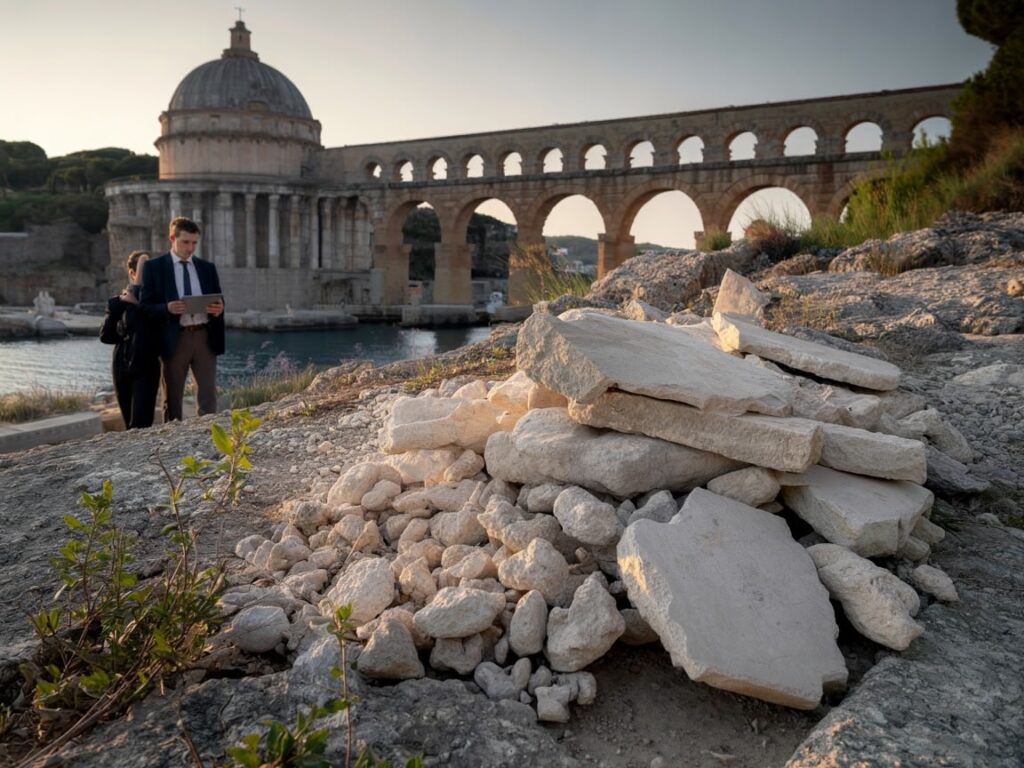Ancient Roman building materials are a great example of sustainable construction practices that have lasted for centuries. Materials like Roman concrete show us how strong and long-lasting these structures can be, and modern architects can learn from this.
Environmental sustainability is a key aspect of architectural design, and the lessons we can learn from ancient Roman practices are valuable for architects in 2025. By studying the makeup and environmental effects of these materials, architects can incorporate more eco-friendly methods into their work.
Looking back at the architectural techniques used by ancient Romans gives us a guide on how to create buildings that not only last but also have a minimal impact on the environment for future generations.
Durability and Longevity of Roman Concrete
Roman concrete stands out for its extraordinary durability and longevity compared to modern building materials. While contemporary concrete structures typically last around 80 to 100 years before requiring significant repairs or replacement, Roman concrete has endured for over two millennia. This exceptional lifespan minimizes the frequency of rebuilding, directly reducing resource consumption and the environmental footprint of construction projects.
Advantages of Roman Concrete
Key factors highlighting the advantages of Roman concrete include:
- Resistance to environmental degradation: Roman concrete exhibits remarkable resilience against chemical corrosion, seawater exposure, and weathering.
- Self-healing properties: Certain formulations allow microcracks to be naturally sealed over time through mineral growth.
- Reduced maintenance needs: Structures built with Roman concrete require fewer repairs, conserving materials and energy.
Notable Examples of Roman Concrete’s Durability
Notable case studies demonstrate these points clearly:
- The Pantheon in Rome, with its massive unreinforced dome, remains structurally sound nearly 2,000 years after completion.
- Roman aqueducts such as Pont du Gard in France continue to stand strong despite constant water flow and centuries of use.
- Harbor structures constructed with pozzolanic concrete resist saltwater corrosion far better than modern equivalents.
Long-Term Sustainability through Roman Concrete
Using materials like Roman concrete can shift architectural priorities toward long-term sustainability by decreasing the environmental costs linked to frequent reconstruction cycles common with modern materials. The longevity inherent in these ancient formulas offers valuable lessons for designing buildings meant to endure both time and climate challenges.

Composition of Roman Concrete
Ancient Roman concrete, known for its long-lasting nature, was made up of three main ingredients:
- Limestone: This was the main component used in Roman concrete, adding strength and stability to the mix.
- Pozzolan: A type of volcanic ash that acted as a binding agent when combined with lime and water, improving the chemical properties of the concrete and minimizing cracks over time.
- Water: Crucial for the hydration process that turned the dry mixture into a solid and unified structure.
Comparing with modern concrete composition
- Modern concrete usually includes cement, sand, gravel, and water, which is quite different from the Roman recipe.
- The production of cement is a significant contributor to carbon emissions in the construction industry, raising environmental concerns.
Environmental effects of different ingredients
- The inclusion of pozzolan in Roman concrete reduced the dependence on cement, which has a large carbon footprint due to its production process.
- Limestone and pozzolan were materials sourced locally by the Romans, reducing emissions related to transportation.
The unique blend of these natural ingredients in Roman concrete played a role in its durability and sustainability. It also provides valuable lessons for architects in 2025 who are looking for eco-friendly building methods.

Emissions and Pollutants in Concrete Production
In examining the emissions and pollutants associated with concrete production, it becomes evident that there are significant differences between Roman and modern concrete processes.
Comparison between Roman and modern concrete emissions
Roman concrete production techniques generally involved lower energy requirements compared to modern methods. The use of natural materials like volcanic ash and lime in Roman concrete resulted in reduced carbon emissions during production. In contrast, modern concrete production heavily relies on cement, which is a major source of carbon dioxide emissions in the construction industry.
Impact on air quality and environment
The emissions from modern concrete production contribute to air pollution, greenhouse gas emissions, and climate change. Nitrogen oxide pollutants released during the manufacturing of cement-based concrete can have detrimental effects on air quality and human health. On the other hand, Roman concrete formulations have been found to emit fewer nitrogen oxide and sulfur oxide pollutants, showcasing a more environmentally friendly approach.
Moreover, recent studies indicate that transitioning towards more sustainable building practices could significantly reduce these harmful emissions associated with modern construction methods. By understanding these differences in emissions and pollutants between ancient Roman and modern concrete production methods, architects in 2025 can make informed decisions to prioritize sustainable building practices that minimize environmental impact while promoting long-term durability.
Reverse Engineering Roman Materials for Sustainable Construction
Reverse engineering ancient Roman building materials like concrete involves leveraging advancements in research techniques such as computational modeling and material characterization tools. These methods enable architects and researchers to dissect the composition of Roman concrete and understand its structural properties in a detailed manner. By analyzing the ancient ingredients and manufacturing processes, modern professionals can derive valuable insights into how to create sustainable construction materials today.
Integrating ancient knowledge into contemporary practices offers several benefits for sustainable construction:
- Environmental Impact: By replicating the durability and longevity of Roman concrete, architects can reduce the environmental footprint of modern buildings.
- Resource Efficiency: Understanding the efficient use of raw materials in Roman construction can lead to more sustainable sourcing and utilization in current projects.
- Innovation: Drawing inspiration from historical practices encourages innovation in material science and architectural design, fostering creativity and unique solutions for sustainability challenges.
By combining historical wisdom with cutting-edge technology, architects in 2025 can unlock new possibilities for environmentally conscious construction that honors the legacy of ancient builders while addressing the needs of the present and future.

Architectural Design Strategies for Environmental Adaptation
Ancient Roman architects prioritized environmental adaptation in their designs to enhance sustainability.
1. Thermal Comfort
Incorporating materials like marble for thermal mass helped regulate indoor temperatures, providing natural cooling in hot climates.
2. Optical Illusions
Roman architects used design techniques such as creating false perspectives on facades to give the illusion of greater depth and grandeur without the need for additional materials.
These strategies not only enhanced the environmental performance of structures but also showcased innovative approaches to sustainable design that can inspire modern architects.
By leveraging these ancient design principles, architects in 2025 can create buildings that are not only environmentally sustainable but also aesthetically pleasing and culturally significant.
Importance of Revisiting Ancient Insights for Sustainable Architecture
The loss of knowledge during the Middle Ages created a significant gap in architectural and construction wisdom that once thrived in ancient Rome. Techniques and materials that contributed to extraordinary durability, energy efficiency, and environmental harmony were largely forgotten or dismissed as society shifted focus. This cultural amnesia led to reliance on less sustainable building methods with shorter lifespans and higher ecological footprints.
Reintegrating historical practices offers a powerful opportunity to redefine sustainability in modern architecture. Ancient Roman building materials demonstrate that sustainability goes beyond energy efficiency—it includes longevity, resourcefulness, and environmental adaptation embedded into the very fabric of construction. By studying these materials and techniques, architects can:
- Reduce material consumption by designing for lifespan extension rather than planned obsolescence.
- Incorporate natural raw materials like pozzolan that lower embodied carbon compared to conventional cements.
- Apply design principles that respond dynamically to local climates, reducing energy needs for heating or cooling.
This approach aligns with the core goals of Environmental Sustainability Lessons from Ancient Roman Building Materials for 2025 Architects, encouraging a synthesis of past wisdom with cutting-edge research. Reviving ancient insights fosters innovation rooted in proven resilience, pushing sustainable architecture beyond incremental improvements toward transformative solutions.

Conclusion
Ancient Roman building materials, particularly Roman concrete, offer invaluable insights into creating sustainable built environments. The durability and longevity of Roman structures showcase the potential for long-lasting and environmentally friendly construction practices that can inspire architects in 2025.
Architects are encouraged to delve into the rich history of ancient Roman building materials and design strategies to inform their contemporary practices. By integrating lessons from the past, architects can develop innovative and sustainable solutions that prioritize environmental sustainability in their projects. Embracing the wisdom of antiquity can pave the way for a more eco-conscious and resilient architectural future.
FAQs (Frequently Asked Questions)
What are the key environmental sustainability lessons architects in 2025 can learn from ancient Roman building materials?
Architects in 2025 can learn about durability, reduced resource consumption, and low environmental impact from ancient Roman building materials such as Roman concrete. These materials demonstrate longevity and sustainability that modern architecture can emulate to create eco-friendly built environments.
How does Roman concrete compare to modern concrete in terms of durability and environmental impact?
Roman concrete is renowned for its exceptional durability and longevity, often outlasting many modern concrete structures. Unlike modern concrete, which typically relies on high-energy production processes emitting significant pollutants like nitrogen oxides, Roman concrete uses natural ingredients like limestone and pozzolan that reduce emissions and environmental footprint.
What are the main components of Roman concrete, and how do they influence environmental sustainability?
Roman concrete primarily consists of limestone, pozzolan (a volcanic ash), and water. This composition contrasts with modern concrete by utilizing natural, locally sourced materials that require less energy to produce, thereby lowering emissions and promoting environmental sustainability in construction.
Why is it important for modern architects to revisit ancient Roman architectural insights for sustainable design?
Revisiting ancient Roman architectural insights is crucial because much knowledge was lost during the Middle Ages. Integrating historical practices offers innovative solutions for sustainable architecture, enabling architects to design buildings that enhance thermal comfort, optimize resource use, and reduce environmental impact.
How are modern research techniques aiding the adaptation of ancient Roman materials for sustainable construction?
Advancements such as computational modeling and material characterization tools allow researchers to reverse engineer Roman materials accurately. These techniques help understand their properties deeply, enabling architects and engineers to incorporate ancient wisdom into contemporary sustainable construction practices effectively.
What architectural design strategies did the ancient Romans employ for environmental adaptation that remain relevant today?
Ancient Romans used design strategies focused on thermal comfort and optical illusions to adapt buildings environmentally. Their thoughtful use of materials and structural designs optimized natural light and heat management—principles that remain relevant for creating environmentally responsive architecture in 2025 and beyond.

